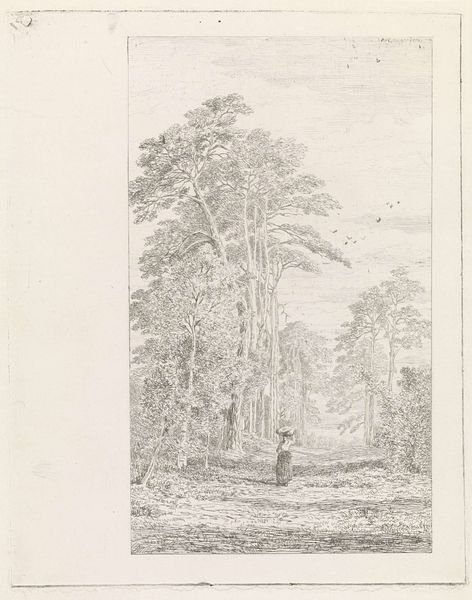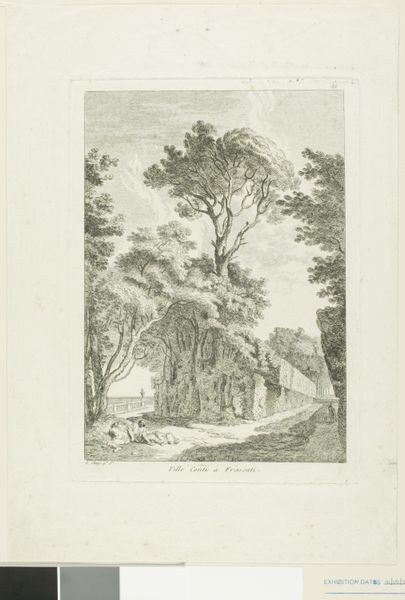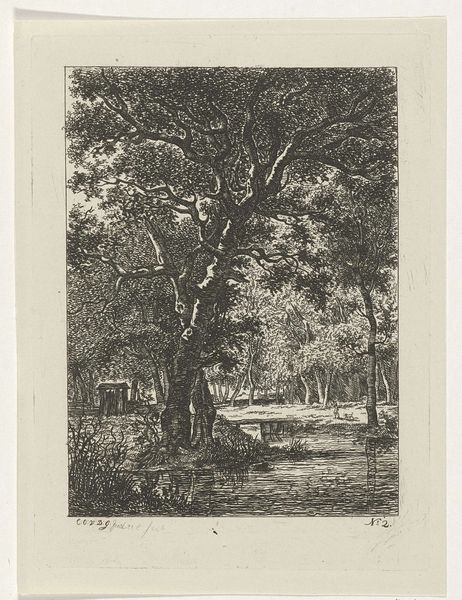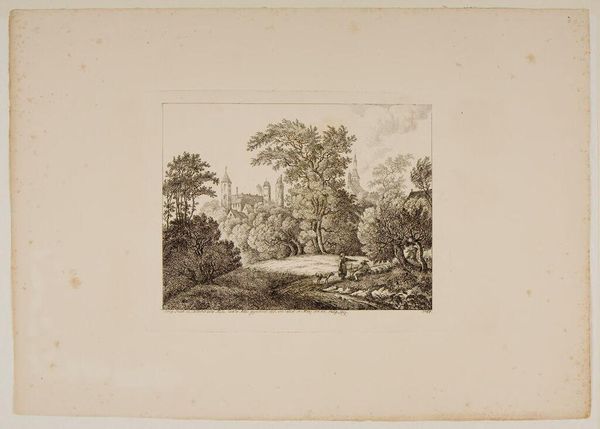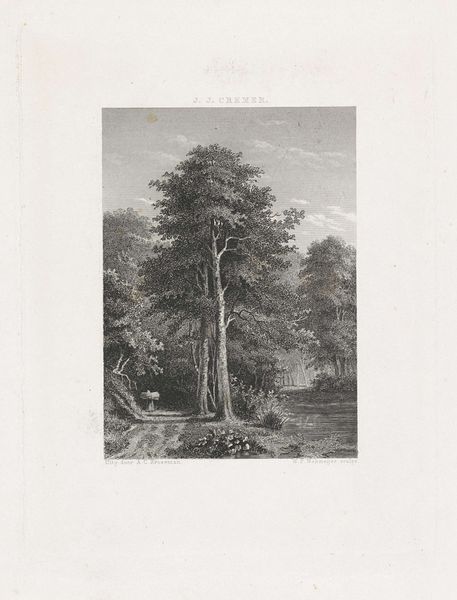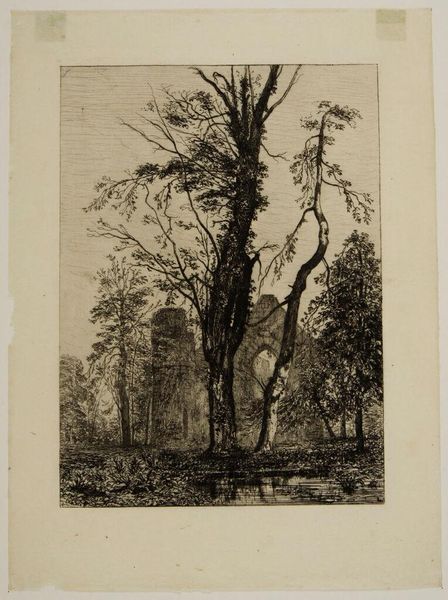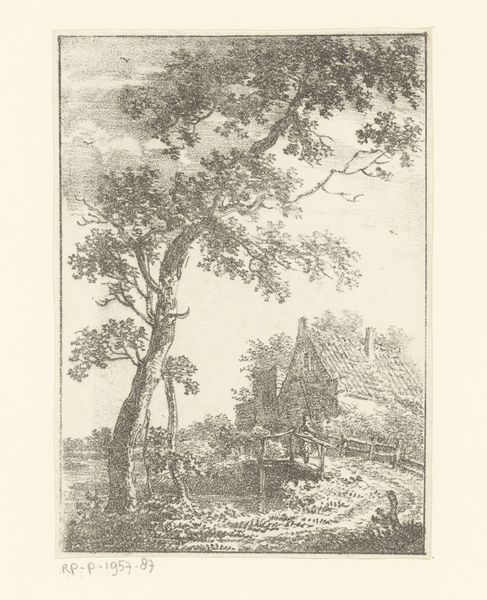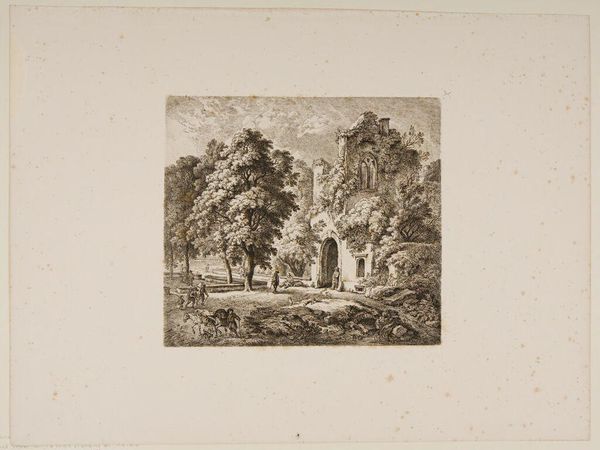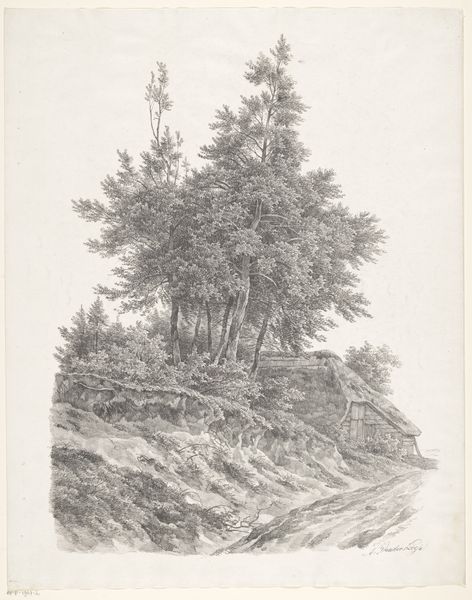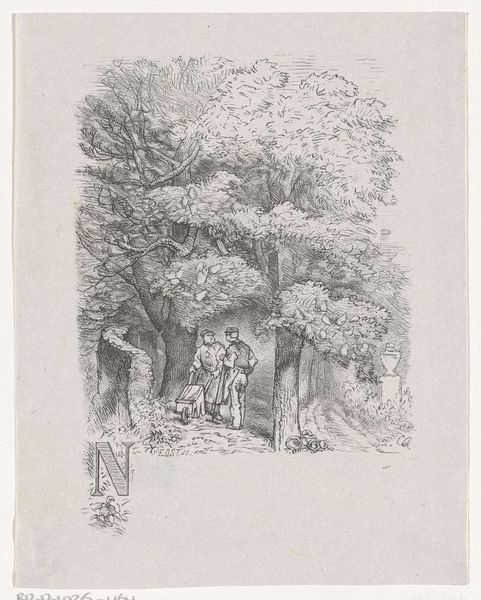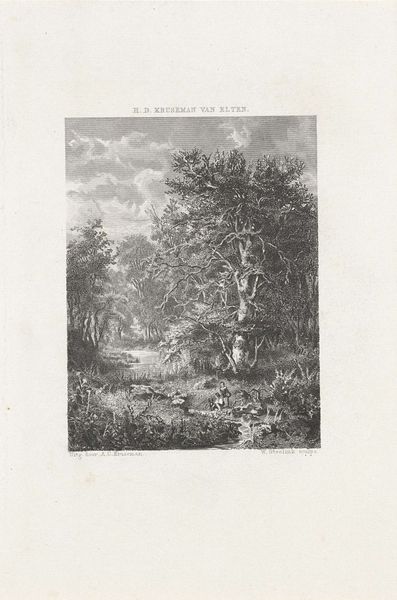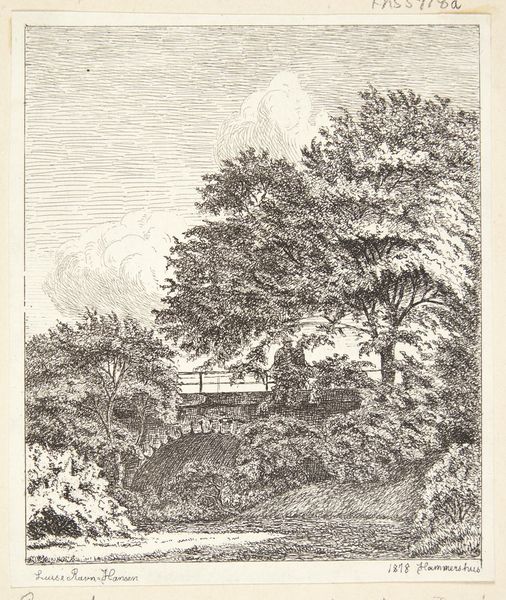
Dimensions: height 235 mm, width 185 mm
Copyright: Rijks Museum: Open Domain
Alexander Mollinger created this print, Dennenlaan, using etching in the Netherlands in the mid-19th century. This work reflects the growing importance of landscape as a subject in its own right, separate from religious or historical scenes. We can see that in this period, the Netherlands was experiencing a surge of national pride and a renewed appreciation for its own natural beauty. Artists turned to the Dutch landscape as a source of inspiration, imbuing it with symbolic meaning. Etchings like this one, which were relatively inexpensive and easy to produce, allowed these images to circulate widely, shaping public perceptions of the Dutch countryside. To truly understand this image, we might turn to period writings on art and nature, municipal records, and publications from local art societies to get a clearer picture of its cultural significance. In doing so, we reveal how art is always embedded in its social and institutional context, reflecting and shaping the values of its time.
Comments
No comments
Be the first to comment and join the conversation on the ultimate creative platform.
